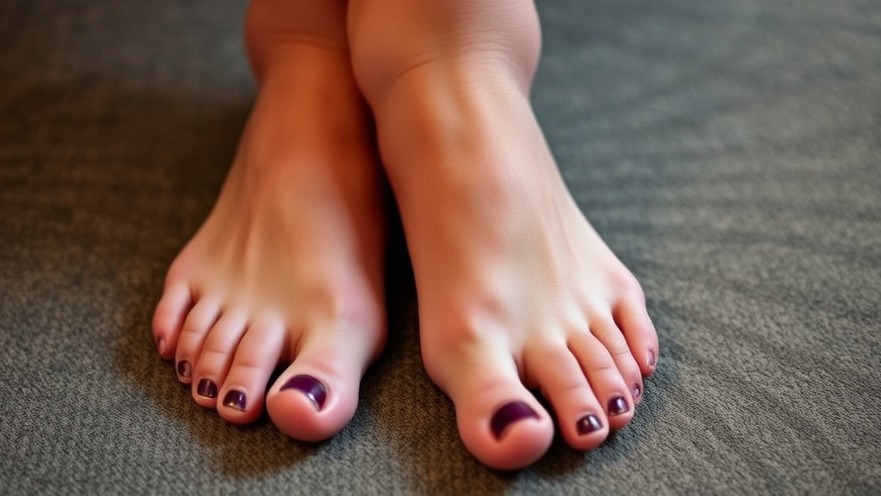
The Importance of Foot Care for Diabetics
For diabetic patients, foot care is not just a routine; it’s a crucial part of overall health management. Diabetes can lead to complications such as neuropathy and reduced blood circulation, which put the feet at heightened risk for wounds and infections. In many cases, neglecting proper foot care can lead to more severe outcomes, including amputation. Therefore, understanding daily foot care practices is vital for individuals living with the condition.
In Diabetic vs. Hot Tub pt. 2, the discussion delves into the essential practices for diabetic foot care, exploring key insights that sparked a deeper analysis on our part.
Key Practices for Taking Care of Your Feet
In the video titled "Diabetic vs. Hot Tub Pt. 2," we explore how specialized care impacts diabetic patients, with a particular focus on toenails and overall foot health. This should highlight the importance of obeying recommendations from foot specialists. Below are key practices recommended for diabetic foot care:
Daily Inspections: Regularly check your feet for cuts, blisters, and any abnormalities, which can lead to serious issues if left untreated.
Moisturize: Keep your feet hydrated with appropriate foot creams, especially for those struggling with dry skin.
Proper Footwear: Selecting shoes with adequate support can prevent pressure points that lead to sores.
Regular Nail Care: Regular trimming and care of toenails diminishes the risk of fungus and ingrown toenails.
Understanding Nail Issues and Remedies
The transcript highlights challenges faced by the patient regarding toenail fungus and thick calluses. Educating patients on taking care of toenails can often make a significant difference. Some helpful tips include:
Nail Trimming: It’s essential to trim toenails straight across and avoid cutting into the corners to reduce the chances of ingrowth.
Fungal Treatments: Using treatments designed explicitly for toenail fungus can help restore the toenails to a healthier state.
Callus Care: Regularly managing thick calluses through gentle removal can prevent pressure wounds, as discussed in the video.
Footwear Choices for Diabetics
The conversation about shoes in the video emphasizes the importance of comfort and support. Sneakers are often a good choice, but some brands can be more beneficial than others. The speaker notes that options like New Balance and Skechers provide ample support. When choosing footwear, consider:
Space in the toe box to allow for proper movement.
Support for the arch of the foot to alleviate pressure during daily activities.
Materials that allow for ventilation to maintain a healthy environment for your feet.
Recognizing Signs of Trouble
Being aware of symptoms like numbness, tingling, or discoloration in the feet is crucial. These can signal complications stemming from diabetes. The importance of quick intervention can’t be overstated, as early treatment is paramount in preventing severe issues like ulcers and infections.
Practical Tips for Diabetic Foot Care
Adopting a routine can help enhance foot health in diabetic patients. Here are a few tips:
Ensure socks and shoes fit correctly and aren't constricting blood flow.
Consider using foot baths at controlled temperatures to relieve discomfort, but ensure the water isn’t too hot.
Stay informed about new foot care techniques and treatments through community resources or healthcare providers.
Conclusion
Regular visits to foot care specialists offer invaluable support for diabetic patients. Such specialized treatment can significantly improve foot health and minimize the risks associated with diabetes. If you or someone you know is struggling with foot health, consider reaching out to a podiatrist or specialist who can provide tailored care and recommendations.
 Add Row
Add Row  Add
Add 




Write A Comment